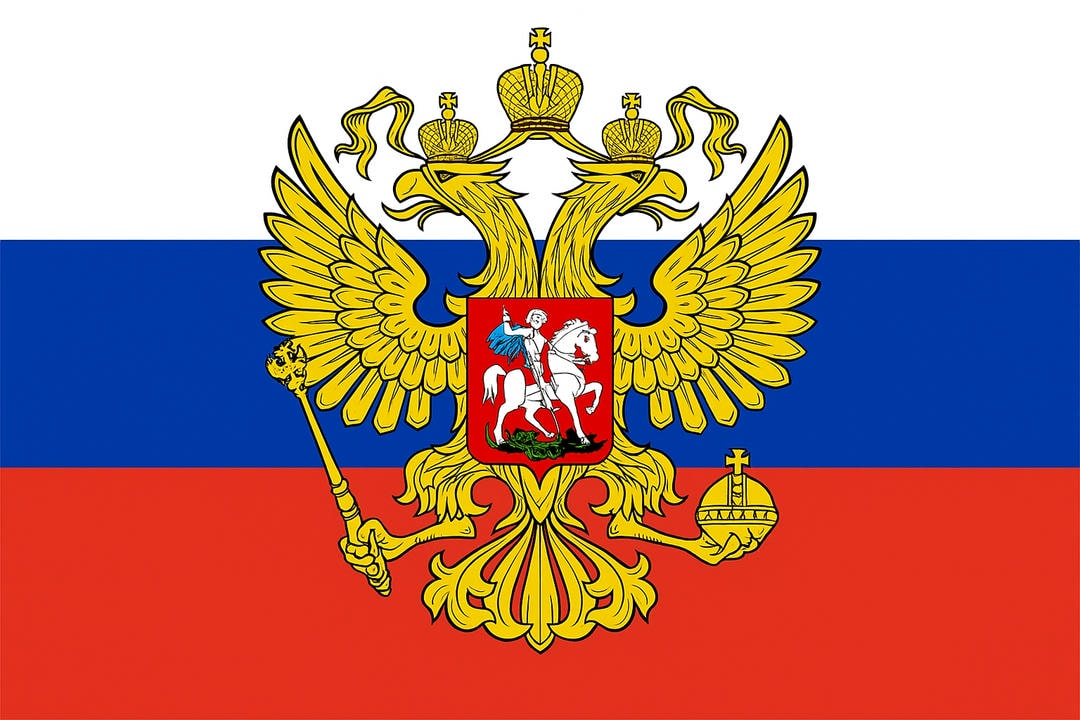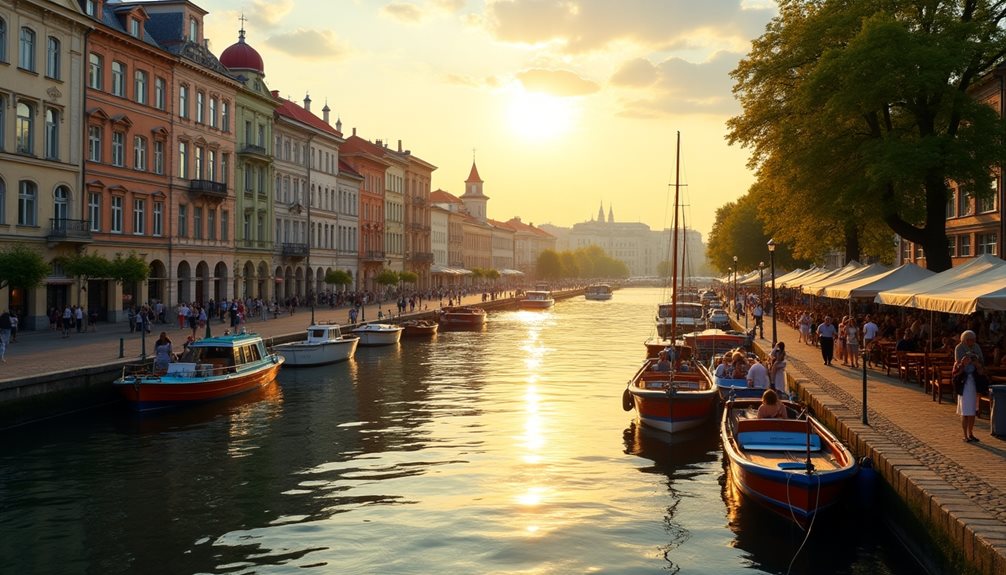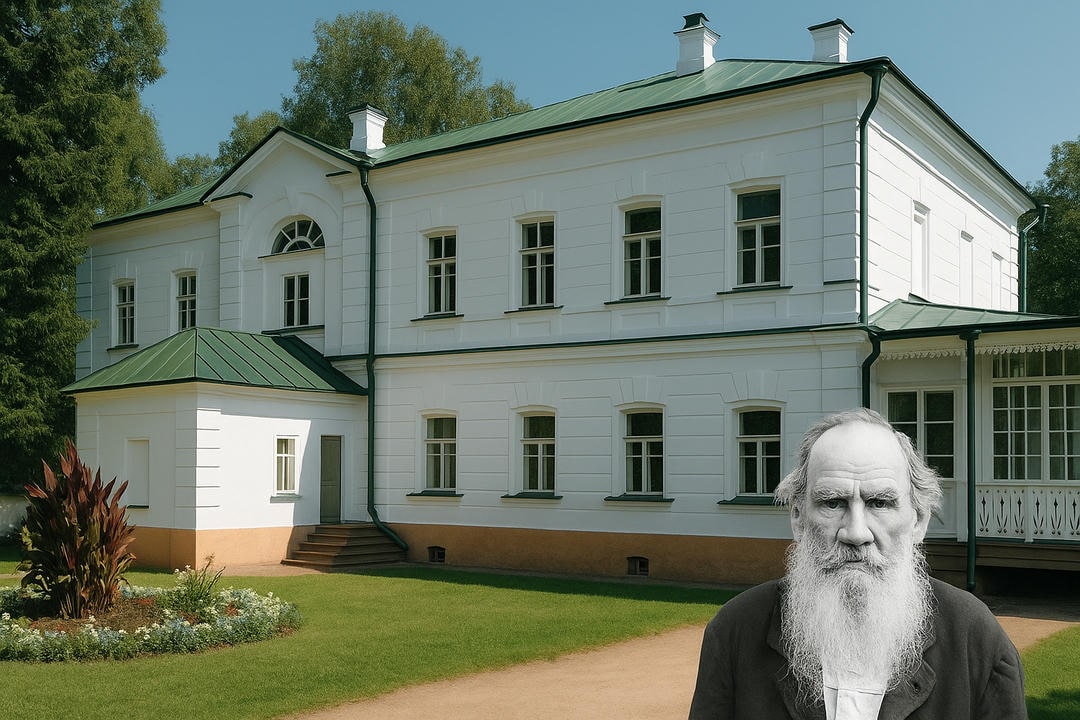Russia’s landscape is adorned with a fascinating array of animal statues, each resonating with cultural and historical significance. From the agile Statue of the Hare in St. Petersburg to Moscow’s tribute to Laika, the first dog in space, these sculptures narrate stories of resilience, empathy, and whimsy. The Bronze Horseman stands as a symbol of historical depth, while Kazan’s Cat introduces a touch of local folklore. As you explore these monuments, you will discover the unique narratives and artistic expressions they encapsulate, offering a glimpse into the rich tapestry of Russian heritage.
Overview of Russia’s Bronze Animal Statues
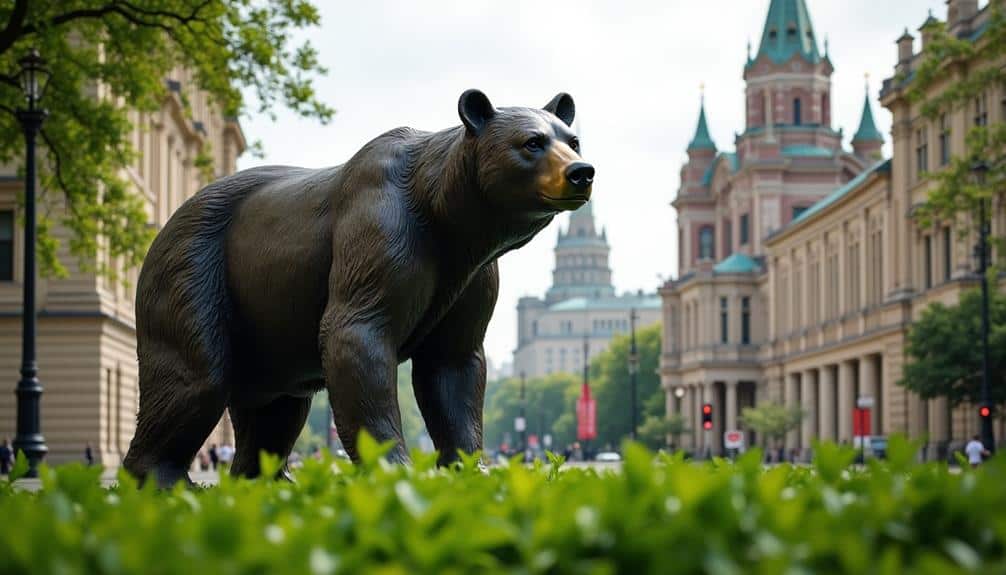
Russia’s bronze animal statues are more than just decorative elements; they are imbued with historical significance and cultural symbolism. These statues are carefully crafted to reflect the nation’s multifaceted heritage, drawing from a rich tapestry of folklore and historical context. Each statue embodies unique artistic styles that range from realistic depictions to more whimsical interpretations, serving as a demonstration of Russia’s diverse artistic endeavors.
Strategically positioned in bustling cities like St. Petersburg, Moscow, and Kazan, these statues are not mere ornaments but prominent tourist attractions. They draw visitors from around the world, keen to experience the cultural significance encapsulated in these bronze masterpieces. The artistic styles employed in these statues vary widely, showcasing the evolution of Russian artistry over the centuries.
Moreover, these statues often become focal points for community interactions, drawing locals and tourists into a shared space of appreciation and reflection. They serve as enduring symbols of Russia’s historical narratives and natural beauty, inviting onlookers to engage with the past and present.
From commemorating historical events to celebrating the natural world, Russia’s bronze animal statues enrich the urban landscape, fostering a deeper connection between people, art, and history.
St. Petersburg’s Bronze Horseman
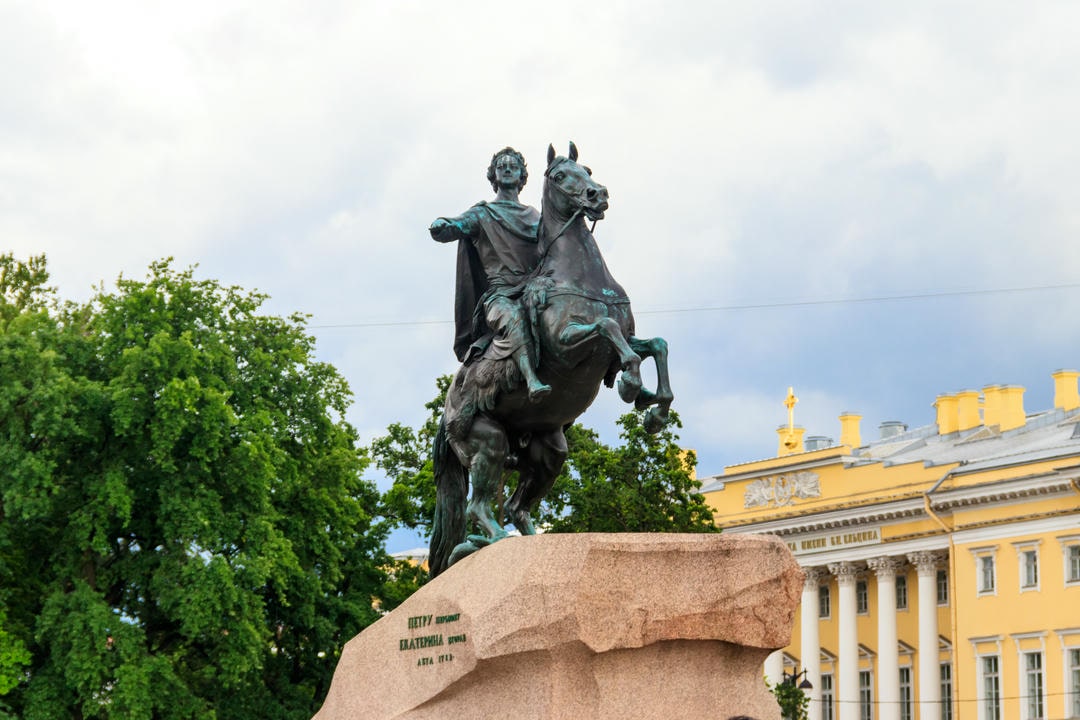
Standing majestically in St. Petersburg, the Bronze Horseman is a representation of the city’s grandeur and historical significance. Erected in 1782, this iconic equestrian statue of Peter the Great has become a profound cultural symbol of Russian strength and ambition.
Sculpted by the renowned French artist Étienne Maurice Falconet, its artistic influence transcends borders, capturing the admiration of visitors worldwide.
The statue’s imposing figure, set atop an enormous granite pedestal shaped like a wave, signifies Peter’s vision of Russia as a powerful maritime nation. This artistic masterpiece not only celebrates Peter the Great’s contributions but also melds seamlessly with the city’s elegant baroque and neoclassical architecture.
The Bronze Horseman is more than just a sculpture; it’s a symbol of St. Petersburg’s enduring spirit and innovative legacy.
Local legends surrounding the Bronze Horseman contribute to its allure. It is said that as long as the statue stands, enemy forces will not conquer the city, imbuing it with a sense of invincibility.
Visitors often engage with this monument, taking photos and exploring its intricate details, ensuring that the Bronze Horseman remains an interactive and cherished landmark for generations to come.
The Kazan Cat
Nestled in the heart of Kazan, the Kazan Cat statue is a charming tribute to one of Russia’s most beloved folkloric figures. This bronze sculpture commemorates the legendary cat, renowned in kazan cat folklore for its cunning and resourcefulness.
The kazan cat history is steeped in tales of the feline’s role in ridding the city of mice, symbolizing protection and cleverness.
The kazan cat design is whimsical yet elegant, capturing the playful essence of the animal while paying homage to its storied past. Perched confidently, the statue invites admiration and interaction, making it a popular spot for photos among visitors.
Its sleek lines and expressive posture evoke a sense of freedom and independence, resonating deeply with an audience that values these ideals.
Kazan cat symbolism extends beyond mere folklore, embodying the spirit of resilience and the triumph of wit over adversity. This makes the statue a significant cultural landmark, drawing both locals and tourists alike.
As part of kazan cat tourism, the statue not only enriches the urban landscape but also serves as a gateway into the rich tapestry of Kazan’s history and cultural heritage.
Moscow’s Laika
Honoring one of the most iconic figures in space exploration history, the statue of Laika in Moscow stands as a poignant tribute to the first animal to orbit the Earth. Erected in 2008, this monument symbolizes Laika’s legacy and the remarkable advancements in space exploration achieved by the Soviet Union. The statue, which features Laika standing atop a rocket, captures the blend of triumph and sacrifice that marked her journey.
Laika’s legacy extends beyond her pioneering flight aboard Sputnik 2 in 1957; she has become a symbol of courage and curiosity. This monument is not just a remembrance of a singular event but also a reflection of canine symbolism deeply rooted in Russian folklore. Dogs in Russian culture often represent loyalty and bravery, attributes embodied by Laika.
The historical significance of this statue lies in its ability to evoke a sense of exploration and the quest for knowledge. It serves as a reminder of the sacrifices made during the early days of space travel while celebrating an era of aspiration and scientific achievement.
Located near the Moscow Military Medicine Institute, the statue of Laika continues to inspire and educate, drawing visitors from around the world.
Yekaterinburg’s Mammoth Monument
While Laika’s statue in Moscow celebrates the courageous spirit of a canine pioneer in space exploration, in the heart of Yekaterinburg, another remarkable monument offers a glimpse into Earth’s ancient past.
The Yekaterinburg Mammoth Monument stands as a testament to the region’s prehistoric heritage and its profound historical significance. Situated near the city’s geological museum, this imposing statue has become a prominent cultural landmark.
The artistic design of the Yekaterinburg mammoth captures the majestic essence of these colossal creatures that once roamed the Siberian plains. Crafted with meticulous attention to detail, the statue portrays a mammoth in mid-stride, its long tusks curving gracefully, evoking a sense of dynamic movement and liveliness.
This monument not only serves as an educational emblem but also as a powerful reminder of the natural history that shaped the region.
As a notable tourist attraction, the Yekaterinburg mammoth draws visitors from around the globe, enthusiastic to explore the ancient epochs it represents.
The cultural impact of this statue extends beyond its aesthetic appeal, fostering a deeper appreciation for the interconnectedness of history, nature, and art.
St. Petersburg’s Semyon the Cat
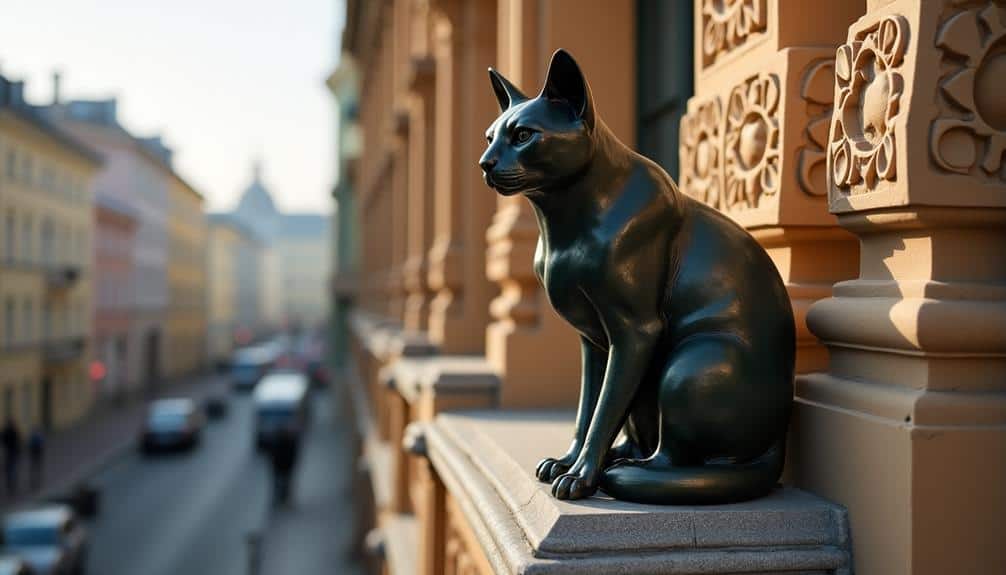
In the heart of St. Petersburg, the statue of Semyon the Cat stands as a cherished emblem of resilience and inspiration. Semyon’s history is deeply entwined with the city’s wartime past; the cat famously survived the Siege of Leningrad, symbolizing hope amid adversity. This tale of survival became the Semyon inspiration, leading to the creation of the statue that now graces the city.
The Semyon design, a bronze figure perched gracefully on a ledge, captures the essence of a vigilant and enduring feline. The artistry of the statue is both enchanting and poignant, reflecting the meticulous attention to detail that brings Semyon to life. Its placement encourages passersby to engage, fostering a sense of connection and admiration that transcends generations.
Semyon’s significance extends beyond mere aesthetics; it serves as a poignant reminder of the indomitable spirit of those who endured the hardships of war.
Semyon interactions are a reflection of this legacy, as visitors often touch the statue for good luck, creating a tangible link to the past. This cultural landmark continues to inspire freedom and resilience in all who encounter it.
Moscow’s “The Elephant”
St. Petersburg may boast many notable sculptures, but Moscow’s “The Elephant” stands as a monumental symbol of the city’s artistic and cultural vibrancy. Nestled in a bustling urban area, this striking statue is renowned for its detailed craftsmanship and profound elephant symbolism. The elephant, often emblematic of wisdom, strength, and tranquility, holds significant cultural weight in Moscow, reflecting the city’s blend of tradition and modernity.
Urban legends abound regarding the origins and inspirations behind “The Elephant.” Some locals whisper tales of ancient secrets and mystical powers, enhancing the statue’s allure. Crafted using intricate artistic techniques, the sculpture’s lifelike form and textured details invite admiration and contemplation. The artist’s ability to capture the essence of such a majestic creature underscores the talent and creativity present in Moscow’s art scene.
The cultural significance of “The Elephant” extends beyond its aesthetic appeal. It serves as a focal point for public interaction, drawing both residents and tourists who are keen to engage with its grandeur.
Whether posing for photos or simply marveling at its presence, visitors contribute to the living narrative of the statue, solidifying its place in Moscow’s rich cultural tapestry.
Moscow’s “Compassion” Statue
Amid Moscow’s vibrant cityscape, the poignant statue known as “Compassion” portrays two dogs tenderly comforting each other, capturing the hearts of all who encounter it. This piece of art transcends mere aesthetics, delving deep into the domain of animal symbolism to convey a powerful message of emotional connection and empathy. The sculptor’s intricate craftsmanship brings to life an intimate moment that resonates universally, offering a moving testament to the unspoken bonds that animals share.
“Compassion” holds a special cultural significance within Moscow’s bustling environment. It serves as a gentle reminder of the values of kindness and understanding, traits often overshadowed in the fast-paced urban life. This artistic expression not only beautifies the city but also instills a sense of shared humanity and compassion among its residents and visitors.
In historical context, the statue is a modern creation, yet it draws upon centuries-old traditions of animal reverence in Russian folklore and art. It stands as a bridge between the past and present, celebrating the timeless virtues of loyalty and companionship.
Ultimately, “Compassion” enriches Moscow’s cultural landscape, embodying the profound connections that define both human and animal experiences.
St. Petersburg’s Mice and Hare Monuments
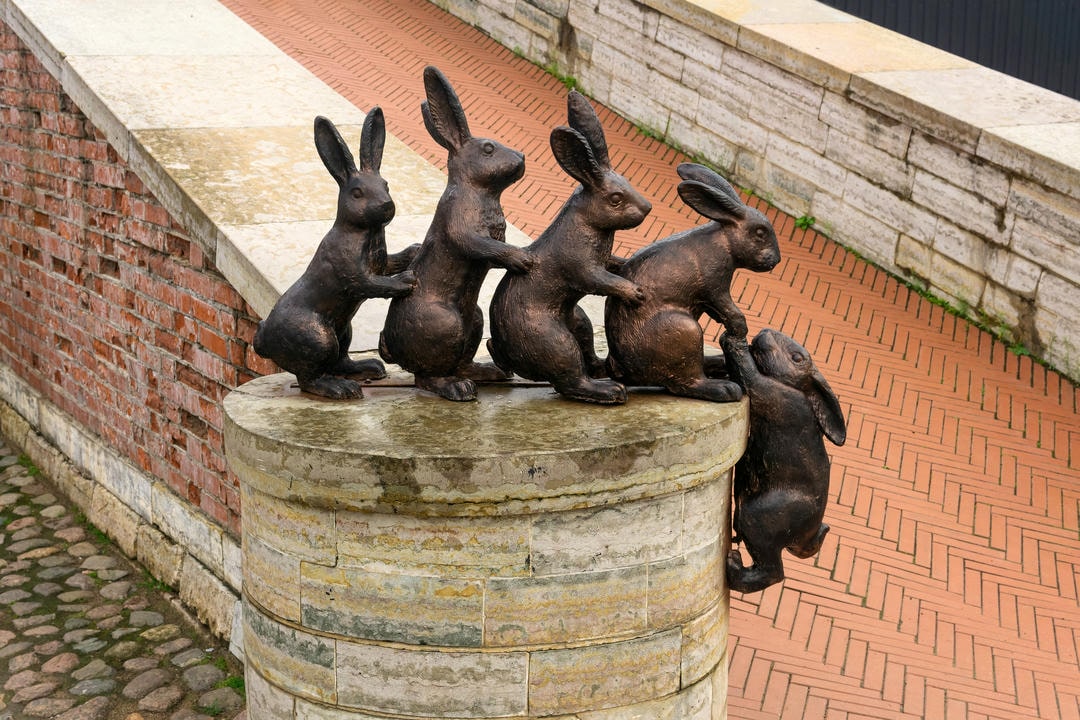
St. Petersburg is home to several unique and beloved animal sculptures, each imbued with cultural symbolism and local folklore. Among these are the Mice Monument and the Hare Escaping Flooding Monument, both of which add charm and historical depth to the city’s urban landscape.
The Mice Monument captures the industrious and resilient spirit of St. Petersburg’s inhabitants. This intricately crafted sculpture depicts two mice in a playful yet meaningful interaction, symbolizing perseverance and community spirit. Steeped in local legends, the monument reflects the hardworking nature of the city’s people, who have contributed to its growth over the centuries. Visitors often interact with this whimsical artwork, touching the mice for good luck or posing for photographs, making it a popular attraction.
Equally captivating is the Hare Escaping Flooding Monument, located near the Peter and Paul Fortress on Ioannovsky Bridge. This statue commemorates a hare that, according to legend, saved itself during a flood by leaping into Peter the Great’s boot. Perched atop a post marked with historical flood levels, the hare serves as a reminder of the city’s history of flooding and its resilience in overcoming such challenges.
Both sculptures not only celebrate St. Petersburg’s folklore but also showcase exceptional artistry, bringing life and character to these small animals. Together, they enrich the city’s cultural tapestry while highlighting themes of perseverance, survival, and community spirit.

